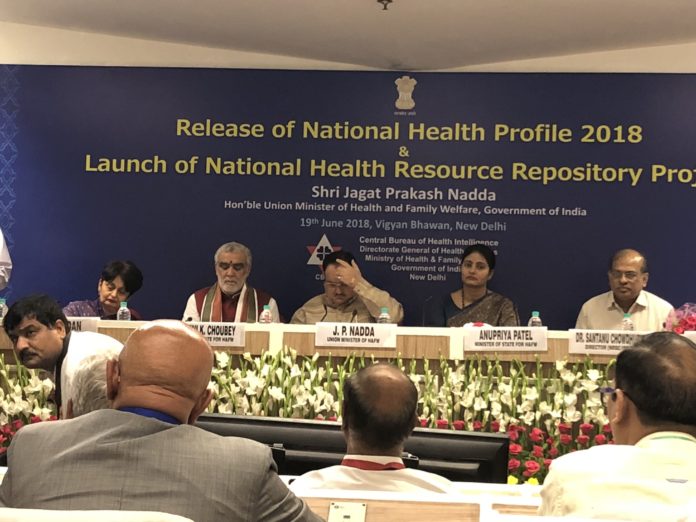This is the first time data from the screening of more than 35 crore people has been published
Data from the largest screening programme in the country for non communicable diseases shows that India has a 8.4% incidence of diabetes, 10% incidence of hypertension and about 0.1% incidence of common cancers. Common cancers refers to the three cancers that can be detected through screening that is breast, oral and cervical cancer. The incidence of stroke has been found to be 0.1% too.
The National Health Profile 2018 has, for the first time, data from the National Programme for Prevention and Control of Cancer, Diabetes, Cardiovascular diseases and Stroke. NPCDCS was first announced in 2010 but has taken off only now. Between January and December 2017, 35,723,660 people were screened. Of these 3006443 people were detected with diabetes, 3,654,099 had hypertension, 47,464 had or were on the verge of a stroke and 39,635 had common cancers. These are the first largescale screening data in India. The document which is exhaustive except for the fact that there are no actual incidence figures for cancers or any of the other NCDs, however lists some interesting items such as deaths because of snake bites.
In 2016, 1068 people dies after being bitten by snakes. In 2017, the figure was 948. In 2015, 91528 people committed suicide, of them 12,654 were in Maharashtra.
In 2016, 1068 people dies after being bitten by snakes. In 2017, the figure was 948. In 2015, 91528 people committed suicide, of them 12,654 were in Maharashtra. There is a year on year improvement in communicable diseases but the absolute numbers still remain very high. In 2017 maximum number of malaria cases were reported in Odisha (3,52,140 cases) and maximum number of deaths in West bengal (29 deaths). The report notes a gradual reduction since 2015. Bihar accounts for the most number of cases of Kala Azar (72%). India has set out to eliminate KA by 2017 but failed to do so.
NHP is the most comprehensive reference document for health statistics in India. It is brought out by the Central Bureau of Health Intelligence. Health minister J P Nadda on Tuesday unveiled the latest document. He also announced the launch of the National Health Resource Repository, an ambitious plan to map every health facility in the country whether government or private and also physically verify them.
The NHP also brought out some startling statistics not just about the shortage of doctors in the country. Against a recommended doctor population ratio of 1:1000, the figure for India is 1:11082 with wide variation between states ranging from 1:28391 in Bihar to 1: 2417 in Arunachal Pradesh.



[…] Statistics shows that 8.4% of our population suffers from health issues that are rarely curable. (https://medibulletin.com/2018/06/19/screening-data-shows-8-4-incidence-of-diabetes-10-of-hypertensio…). Development of primary health care centers have not fully lived up to expectations, especially […]